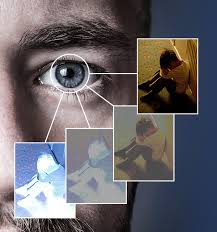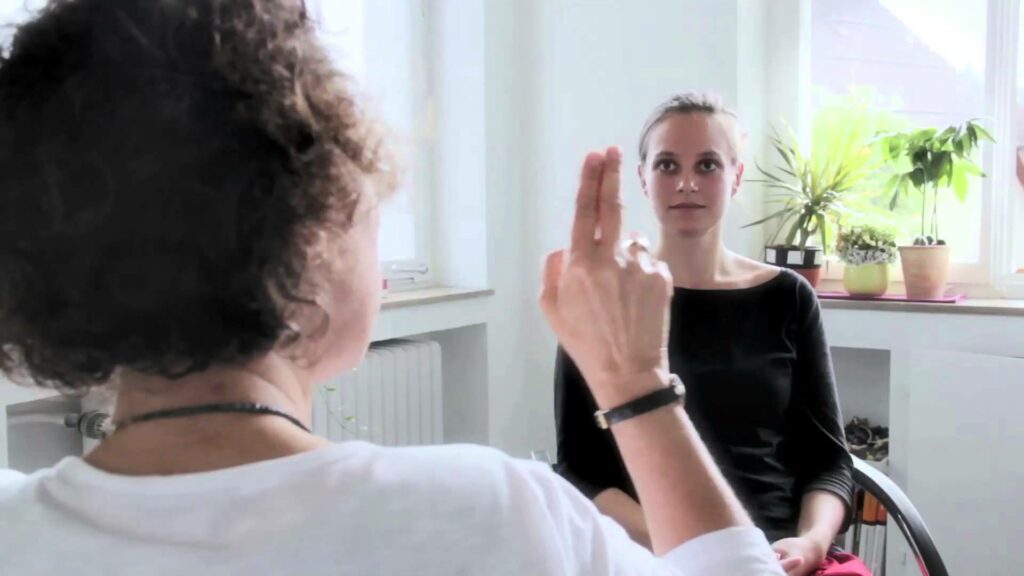Phobias can be debilitating and limit a person’s ability to lead a normal life. Traditional therapies for phobias, such as exposure therapy, can be challenging or triggering for some individuals. Eye Movement Desensitization and Reprocessing (EMDR) therapy has emerged as a promising alternative for the treatment of phobias. In this blog, we will discuss EMDR for phobias, its benefits, and how it is delivered. We will also discuss how to find a qualified EMDR therapist for those seeking help.
Contents
What Is EMDR?

EMDR (Eye Movement Desensitization and Reprocessing) is a form of therapy. It uses bilateral stimulation, such as eye movements, to help individuals process and overcome traumatic experiences. During an EMDR session, the therapist guides the client through recalling the traumatic memory while simultaneously engaging in bilateral stimulation.
This process helps the brain to reprocess the traumatic memory and reduce the associated distress and negative beliefs. EMDR is often used to treat post-traumatic stress disorder (PTSD) and other trauma-related disorders.
Is EMDR Effective For Phobias?
Yes, it is effective in treating the condition. Phobias are often rooted in past traumatic experiences or negative beliefs. EMDR for phobias can help to reprocess traumatic experiences and beliefs, thereby reducing the associated distress and fear. In this, the therapist can guide the client to recall the traumatic experience or negative belief while engaging in bilateral stimulation, such as eye movements or tapping. This process can help to desensitize the individual to the phobic trigger and create new, positive associations. However, the effectiveness of EMDR for phobias may depend on individual factors and the specific nature of the phobia.
How Is EMDR Delivered For Phobias?
Given below is a step-by-step procedure of EMDR for the treatment of phobia:
Assessment
During the assessment phase, the therapist will typically gather information about the client’s phobia. Such as the specific trigger, the severity of the phobia, and any past attempts at treatment. The therapist may also assess for any underlying traumatic experiences or negative beliefs contributing to the phobia.
Preparation
The therapist will discuss the EMDR process with the client. He will provide information about what to expect during the session. This may include information about the bilateral stimulation used in EMDR. It may also include how it can help to desensitize the individual to the phobic trigger. The therapist may also discuss any potential risks or benefits of EMDR and answer any questions the client may have.
Identification of target
The therapist and client will work together to identify the specific phobic trigger or related traumatic memory to target during the EMDR session. The therapist may use various techniques, such as visualization or guided imagery, to help the client recall the traumatic memory or phobic trigger.
Bilateral stimulation

Once the target has been identified, the therapist will guide the client to focus on the traumatic memory or phobic trigger while engaging in bilateral stimulation. This may involve the client following the therapist’s fingers with their eyes, or listening to alternating tones through headphones. The therapist will monitor the client’s responses throughout the session and adjust the bilateral stimulation as needed.
Processing
During the bilateral stimulation, the client may experience various emotions, physical sensations, or cognitive insights. The therapist will guide the client through the processing of the traumatic memory or negative belief, helping them to reprocess the experience more adaptively. This may involve challenging negative beliefs, creating new positive associations, or accessing new insights and perspectives.
Evaluation
After the session, the therapist will evaluate the effectiveness of the EMDR session and determine if further sessions are needed to fully address the phobia. The therapist may use various measures to assess the client’s progress, such as self-report questionnaires or behavioral observations.
Closure
The therapist will help the client to re-orient and ground themselves after the EMDR session. This may involve techniques such as deep breathing or mindfulness exercises. The therapist will also provide any necessary support or resources for the client to continue processing their experiences outside of the session.
Benefits Of EMDR
 EMDR (Eye Movement Desensitization and Reprocessing) can provide several benefits for individuals with phobias, including:
EMDR (Eye Movement Desensitization and Reprocessing) can provide several benefits for individuals with phobias, including:
- Effective treatment: EMDR is an effective treatment for phobias. A 2018 meta-analysis found that EMDR was more effective than no treatment or placebo for reducing phobia symptoms.
- Rapid results: EMDR can often produce rapid results, with some individuals reporting a reduction in phobia symptoms after just a few sessions. This can be particularly beneficial for individuals who may not have the time or resources for longer-term therapy.
- No exposure therapy required: EMDR does not require the use of exposure therapy, which can be challenging or triggering for some individuals with phobias. Instead, EMDR can help individuals to process the traumatic memory or negative belief associated with the phobia in a safe and controlled way.
- Long-lasting effects: EMDR has been shown to produce long-lasting effects for individuals with phobias, with some studies reporting a reduction in phobia symptoms up to 12 months after treatment.
- Reduced distress: EMDR can help to reduce the distress associated with phobic triggers and traumatic memories, allowing individuals to feel more in control and less overwhelmed by their phobia.
- Improved quality of life: By reducing phobia symptoms and associated distress, EMDR can improve an individual’s quality of life, allowing them to engage in activities they may have previously avoided due to their phobia.
Ways To Find EMDR For Phobias

Here are some points on how to find an EMDR therapist for phobias:
- Search Online: Use search engines like Google, Bing, or Yahoo and search for EMDR therapy near you. This will provide a list of therapists or clinics that offer EMDR therapy. You can also use online directories which allow you to filter your search by location, specialty, and insurance.
- Referrals: Ask your primary care physician, mental health provider, or a trusted friend or family member for a referral to an EMDR therapist. They may be able to recommend a professional who has experience treating phobias using EMDR.
- Recommendations: Check online reviews and ratings of EMDR therapists or clinics near you. You can also ask for recommendations from online support groups or forums for individuals who have undergone EMDR therapy for phobias.
- Insurance: Check your health insurance plan to see if EMDR therapy for phobias is covered. If you have a preferred provider organization (PPO) or health maintenance organization (HMO), you may need to select a therapist who is in-network to receive coverage. You can also contact your insurance company directly to get a list of EMDR therapists that are covered under your plan
Conclusion
In conclusion, EMDR therapy can be a highly effective treatment for individuals struggling with phobias. It provides a safe and controlled way to process traumatic memories and negative beliefs associated with the phobia, without requiring exposure therapy. EMDR can produce rapid and long-lasting results, reducing distress and improving the overall quality of life. If you are struggling with a phobia, seek help from a qualified EMDR therapist to see if this treatment may be right for you.
For more information, please contact MantraCare. A phobia is a serious behavior that can cause physical, emotional, or psychological harm to a person. If you have any queries regarding Online Counseling experienced therapists at MantraCare can help: Book a trial Online therapy session


